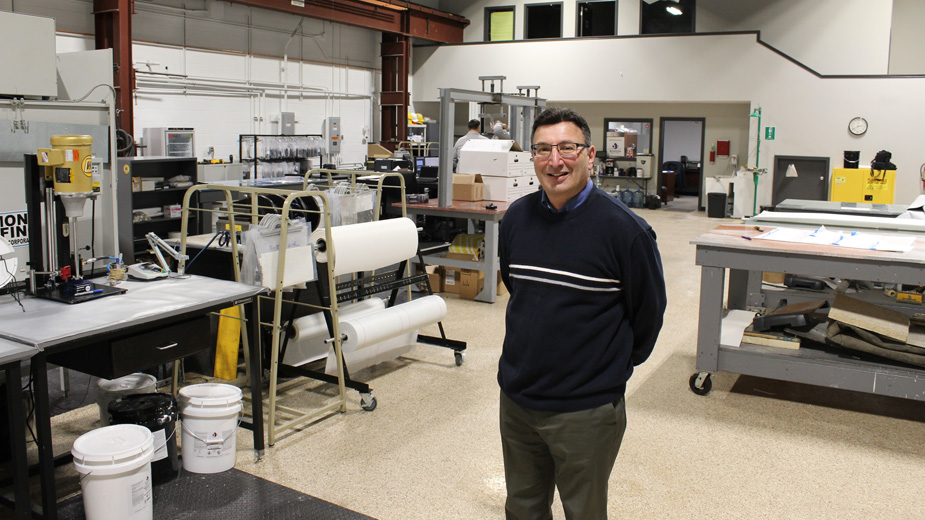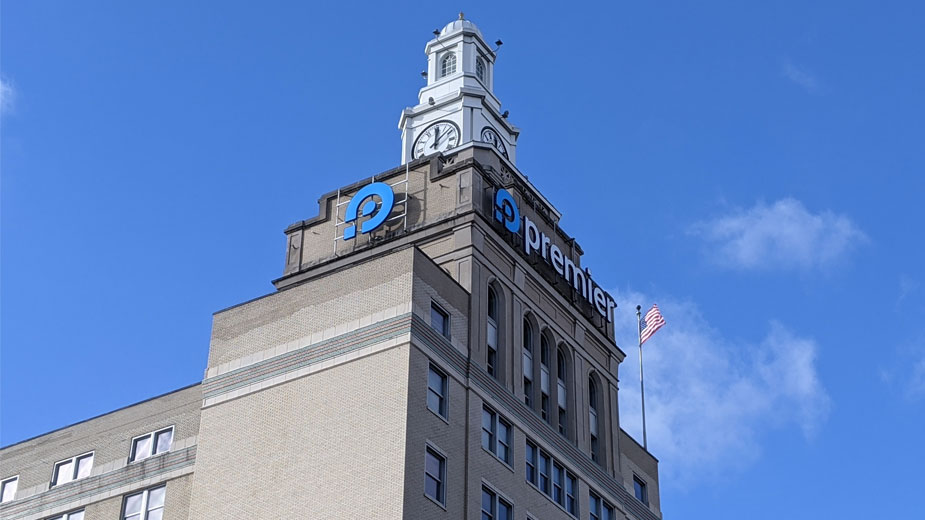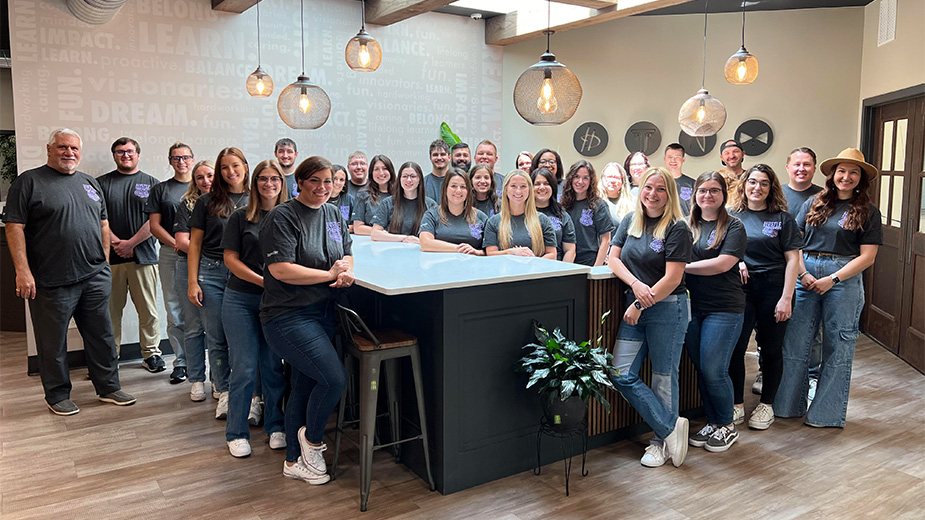Simon Roofing’s Lab Tests Life Expectancy
YOUNGSTOWN, Ohio – A roof is an easy thing to forget about. It’s there, doing its job every day, keeping us dry. Until it isn’t. That’s when the problems can start. It’s with that in mind that Simon Roofing launched its PreVision roof inspection department.
The department, using a combination of trained inspectors and advanced testing and research technologies, paints clients a picture of the status of their roofs and when they’ll need work done.
“The focus is on what the customer really needs. Since we’re a manufacturer of those products, an installer of those products and we warrant those products, all of those attributes are under our control,” says Michael Dohar, Simon’s chief operating officer.
The process starts, unsurprisingly, up top. From the inside of a building, inspectors look for any signs of roofing issues, such as stained ceiling tiles, and safety concerns. Then, they head to the roof for a visual inspection. In Simon Roofing’s PreVision system, there are more than 300 problems – dubbed “deficiencies” – that workers can mark off.
In addition to physical issues with the roof, which range from punctures to loose flaps to wet insulation, they also look at the structure of the roof.
“We’re looking at measurements and an inventory of curves, penetrations and pipes,” says Jim Hildebrand, operations director for Simon’s PreVision division. “We also ask [inspectors] how they would repair them because our system can produce quotes. This is a very thorough investigation.”
The final step is taking a core sample. Inspectors cut a couple of small sections from the roof, packaging the membrane – the top layer of the roofing – and send it to Simon’s lab in Boardman to be analyzed in the PreVision lab.
While the inspectors use a proprietary software program, PreVision 2.0, to mark areas of concern and generate quotes for work, lab technicians have equipment of their own to provide clients with useful information regarding their roof: its remaining expected life.
“All the information from the customer is on these tracking sheets. It’s data, the name of the customer, the roof size, the type of roof and things like that,” says the lab manager, Jeff Meyers. “Once it arrives here, we put it into our dashboard program. That is a visual way to see what we have in the lab. We have three days to finish tests, so it’s also a visual queue.”
In those three days, the roof samples make their way down the lab, from one end to the other. After being logged, the samples are cut into dog-bone-shaped pieces.
Those taken from asphalt roofs are first heated to 60 degrees Celsius before being cut into pieces about a foot long. Meanwhile, samples taken from tar-based roofs are put directly into a die cutter and trimmed into pieces a couple of inches long.
“The asphalt-based roofing gets warmed up to keep up with ASTM [American Society for Testing and Materials] testing methods. It has to be warmed up to a specified temperature or it’ll fracture when you cut the sample,” Meyers explains.
From there, the samples are rebagged with a complete list of who’s handled the sample to keep in compliance with ISO standards. After being cut, the pieces are put into an Instron machine.
The machine, which Simon bought in 2011 after launching the PreVision lab a year earlier, clamps onto either end of the membrane sample – using the wider, dog-bone ends – and stretches it, pulling one end upward, while a computer hooked up to the machine takes readings. Some lightly weathered samples can stretch upward of 900%, nine times its original length, while those that are nearing the end of their viable life will snap almost instantly.
What the lab technicians are looking for here is twofold: elongation and tensile strength. Meyers likens the samples to rubber bands.
“When it’s new, it’s stretchy and soft and pliable,” he says. “But when you pull that old rubber band out of your desk, you can stretch it and it just breaks. It’s the same thing with a roof sample.”
As a membrane ages, he continues, its tensile strength increases, but its ability to stretch decreases, making it more susceptible to cracking and breaking.
The lab also runs tests that simulate wind and exposure to light and the elements, as well as examining the strength of the bonds between the adhesives and roofing sheets.
After the testing is complete in the PreVision lab, those data are put together with the inspector’s report to produce a recommendation for the customer, including how long Simon testers expect it to last, any current issues and options on how to proceed.
“Our strategy is to repair first, restore second and replace as the last resort,” says Dohar, the chief operating officer. “A big part of our lab and [research and development] effort is to make sure we understand all of the roof types in the industry so that we have a solution we can tailor to the customer.”
And having the ability to custom-make roofing applications is crucial. Simon Roofing has sites in 34 states, from the arid Phoenix area to humid New Orleans to northeastern Ohio and its harsh winters.
“We have several different chemistries that we use and they vary from waterproofing to chemical-reacted coatings to reinforcements that can be embedded,” Dohar says, adding that the company also has research applications methods for its products.
The most recent development to emerge from the lab was the CLP Membrane System, a puncture-resistant, single-ply roofing replacement that’s designed to eliminate seams on a roof.
The product was introduced last May, Dohar says.
The R&D department, he continues, is constantly developing new roofing technologies and improving upon Simon’s existing products.
“Our ownership has a lot of years in the industry, as do other experienced people. That experience, in combination with the voice of the customer and marketplace, means we have a lot of data for what the market needs and what they’ll pay for,” Dohar says. “We can bring that information into the R&D program and put together a proposition that serves the marketplace well.”
Pictured: Simon Roofing chief operating officer Michael Dohar says the company’s research and development division is always researching how to improve its products.
Copyright 2024 The Business Journal, Youngstown, Ohio.


